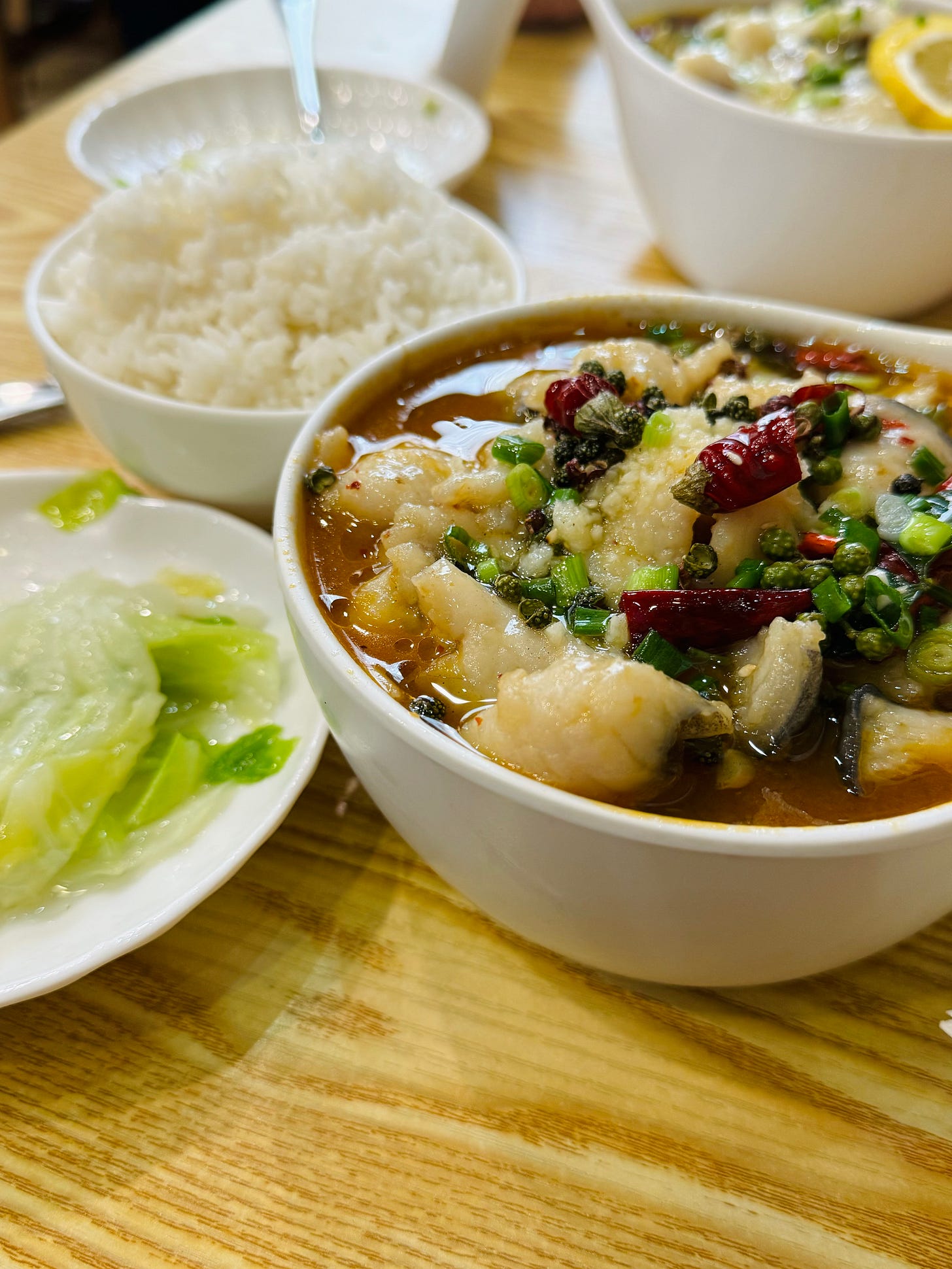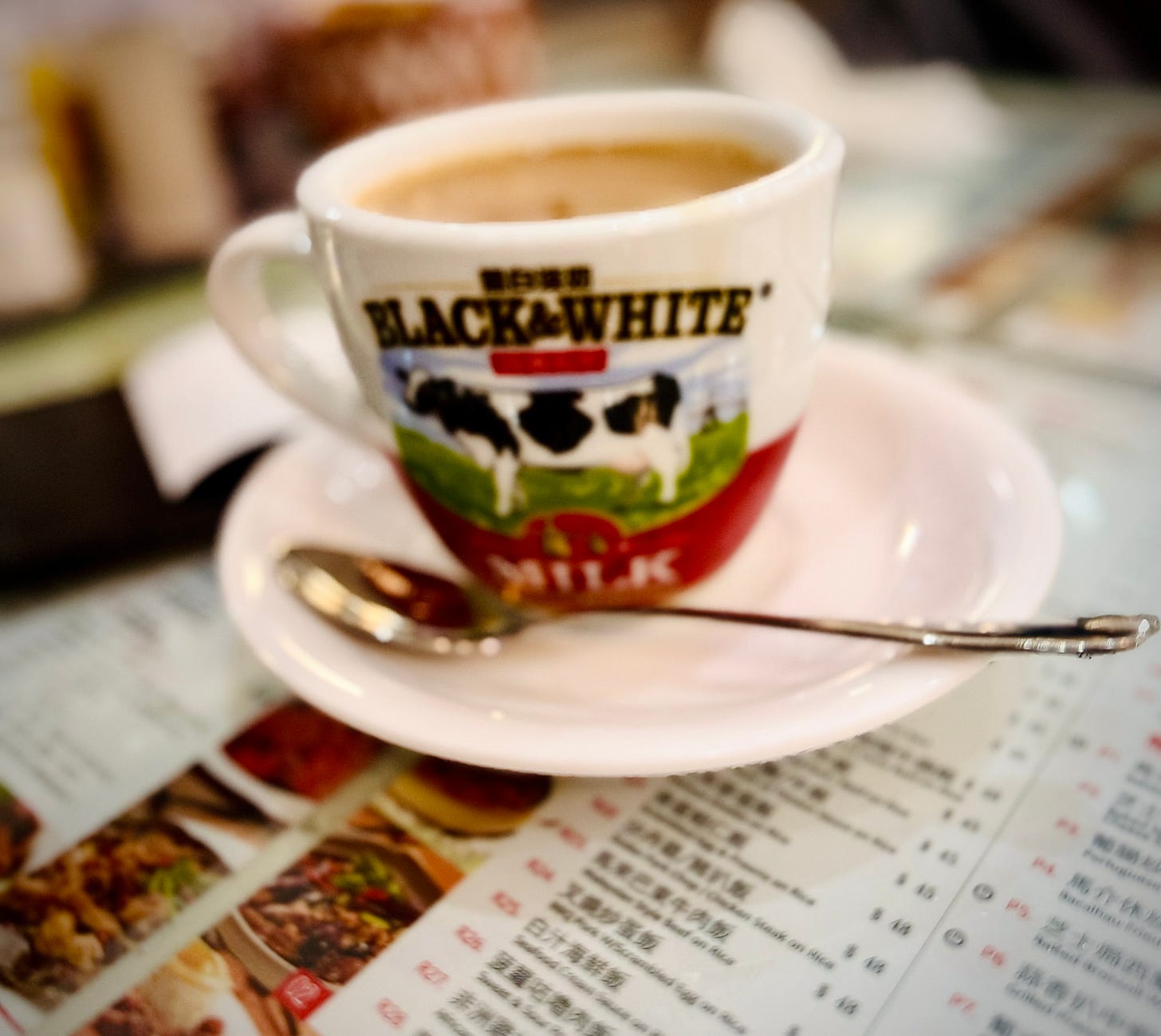If you ask me what I like about Macau, I would say one of my favorite things is the tea restaurants, or "cha chaan teng," as they're commonly known in Hong Kong and Macau, offering a wide variety of dishes at affordable prices.
Dining in a tea restaurant is relaxing and satisfying. The food is simple, but the menu offers a wide range of choices, with flavours from Japanese, Vietnamese, Malaysian, Korean, Portuguese, and Chinese cuisines.
For breakfast, you could have a pineapple bun or French toast served with scrambled eggs, along with a cup of Hong Kong-style milk tea or coffee. You could have a hearty bowl of noodle soup as well. However, muffins, croissants, or Danish pastries are not on the menu.
Though I prefer to have breakfast at home, I often have lunch at a tea restaurant. The extensive menu caters to diverse tastes, from Western-inspired dishes like fried pork chops and Portuguese chicken to Asian specialties like Hainanese chicken and Malaysian laksa. Because of the variety, everyone can find anything to enjoy.
A typical lunch set, costing around US$8-10, offers great value for money. This includes a house special bowl of soup to start the meal, followed by a main course, and ending with a cup of coffee. The coffee is offered in either Hong Kong style, which comes with milk already mixed in, or American style, where the milk is served in a tiny jar on the side. You can opt for milky tea or lemon tea. If you prefer iced tea or coffee, there is an extra charge of about US$0.80. Evaporated milk is used adding to its fragrance.
It’s interesting to note that while free paper napkins are a given in North American eateries, it isn’t always the case in Hong Kong and Macau, where you are only provided with a small, thin napkin, or sometimes none at all. It is a good tip to always have some tissue paper on hand. The difference may be attributed to local customs, scarce of paper, business cost concerns or environmental consideration.
It’s a cost-effective alternative to cooking at home. For busy individuals, eating out at a tea restaurant saves time and effort. There's no need to shop for groceries, cook, or clean up afterward. Despite the affordable prices, tea restaurants serve delicious and good-portion meals. The meticulous selection of ingredients and traditional recipes surpass the homemade food.
The main course options include fried pork chop, Hainanese chicken, barbecued duck or pork, curry beef brisket, tofu and cod, minced beef with egg, and many more. Each dish comes with rice and vegetables. While I enjoy all of these options, my favorites are Malaysian laksa, Chinese chicken and salted fish fried rice, and Japanese sushi plate or sashimi bowl.

Additionally, if you don’t want to dine at a restaurant, you can ask them to wrap up your meal set to take home with you. This adds another layer of convenience, allowing you to enjoy the same great food in the comfort of your own home.
No wonder tea restaurants are so popular in Hong Kong and Macau, with many of them lining the streets. They offer a perfect blend of convenience, variety, and value, making them a popular place for locals and visitors alike.
Dining at a cha chaan teng is not just about the food but also the cultural experience. These eateries are often bustling with activity, providing a unique glimpse into local life. These restaurants often serve as community hubs where people from different walks of life come together to enjoy a meal in a relaxed atmosphere, while engaging in some chit chatting and maybe gossiping.
Tea restaurants are usually open from early morning until late at night. In between lunch and dinner, you could always pop in for coffee, tea, or light snacks such as spring rolls, chicken wings, and egg tarts. These are often offered during afternoon tea time or happy hour, making the prices even better. There is also a night snack time for people to have some bites and drinks to wrap up their day.
It's no surprise that tea restaurants are popular in these regions. They offer a perfect blend of convenience, variety, and value, making them a popular place for many locals and visitors alike.
Immigrants from Hong Kong have brought a rich culinary tradition to Vancouver, making the city known as a “food paradise”. However, there are not many “cha chaan teng" (tea restaurants” in Vancouver. Introducing more cha chaan tengs in Vancouveer would certainly diversify the local dining culture and culinary landscape. Let’s hope that as the city develops, more tea restaurants will emerge.





Nice to know the difference between HK coffee and Amerian coffee :-)